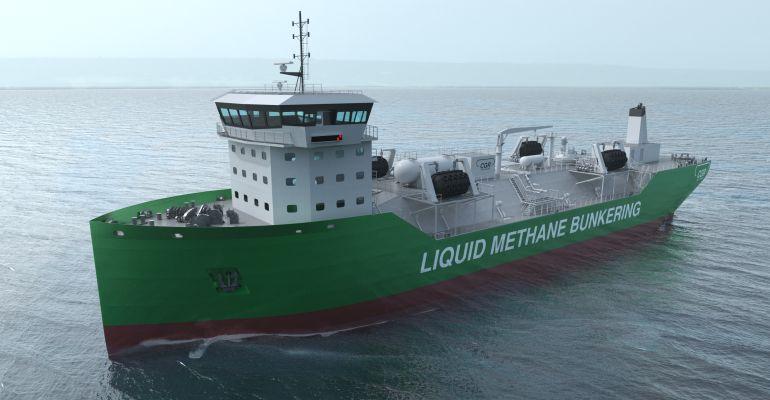Stig Hagen, managing director of Kanfer Shipping, said a crucial component in the development of a network of LNG bunkering infrastructure is LNG terminals, from which small to medium LNG carriers can transfer and store LNG.
Furthermore, LNG storage requires complex infrastructure and a reliable supply chain for LNG import and export that in turn needs substantial financial commitments.
“Converting ships from heavy fuel oil to run on LNG, either as newly built tonnage or by retrofit, is also capital intensive, despite the wide range of proven technologies available. Varying regulations per region and lack of bunkering facilities and standards are additional challenges,” Hagen told Seatrade Maritime News.
He added: “There is also a need to facilitate the harmonisation of technical standards. For its part, Kanfer, with its expertise in LNG breakbulk and bunkering, believes that an LNG bunkering strategy must be flexible and able to scale up when demand grows.”
Last month, Kanfer entered into an agreement with CGR Arctic Marine to design and develop the unique Liquid Methane Bunkering Vessel (LMBV) as well as an innovative gas delivery system that together will help reduce the overall cost of LNG bunkering infrastructure.
The LMBV is a first for the industry with a plug-in hybrid power system comprised of a modular battery system in combination with pure gas generators. Another feature is the onboard multi-purpose cargo handling plant, combining cooling, reliquefication and gas recovery operations.
CGR Arctic, Norway’s LNG technology firm, said the goal with the LMBV is to radically improve cost efficiencies and lower emissions from seaborne LNG bunkering operations.
In addition to the LMBV, Kanfer is also addressing the cost and operational challenges of LNG bunkering with a flexible tug and barge-based solution that is cost efficient and scalable, involving LNG transportation and bunkering service, and LNG transportation and floating terminal solution.
“Kanfer believes bunkering solutions need to be constantly configured from the customer’s perspective, using scalable, modular designs that can grow in a manageable, demand-specific timeframe and within the budgetary parameters of customers,” Hagen said.
“For its part, Kanfer is focused on helping shipowners and port operators switch to LNG as a marine fuel. Together with CGR and its partners, Kanfer is combining scalable and flexible gas logistics solutions with smart engineering designs to build highly-cost efficient bunker vessels and highly engineered fuel gas supply systems,” he explained.
The hybrid system of the LMBV, for example, can address surplus energy by storing it in battery modules, with the stored energy used for peak shaving while being sufficient to discharge the entire bulk cargo without the generators running.
“Kanfer believes bunkering solutions need to be constantly configured from the customer’s perspective, using scalable, modular designs that can grow in a manageable, demand-specific timeframe and within the budgetary parameters of customers,” Hagen said.
“With the implementation of IMO 2020, we expect a continued increase in demand for LNG as a bunker fuel as more traders, shipowners, and port operators continue to look to LNG as an alternative fuel. In fact, the global bunkering industry is expected to grow at CAGR of 15% over the next five years making LNG bunkering one of the fastest segments in LNG. Kanfer is well placed to capitalise on the rising global demand for LNG bunkering,” he said.
Copyright © 2024. All rights reserved. Seatrade, a trading name of Informa Markets (UK) Limited.
Add Seatrade Maritime News to your Google News feed.  |

